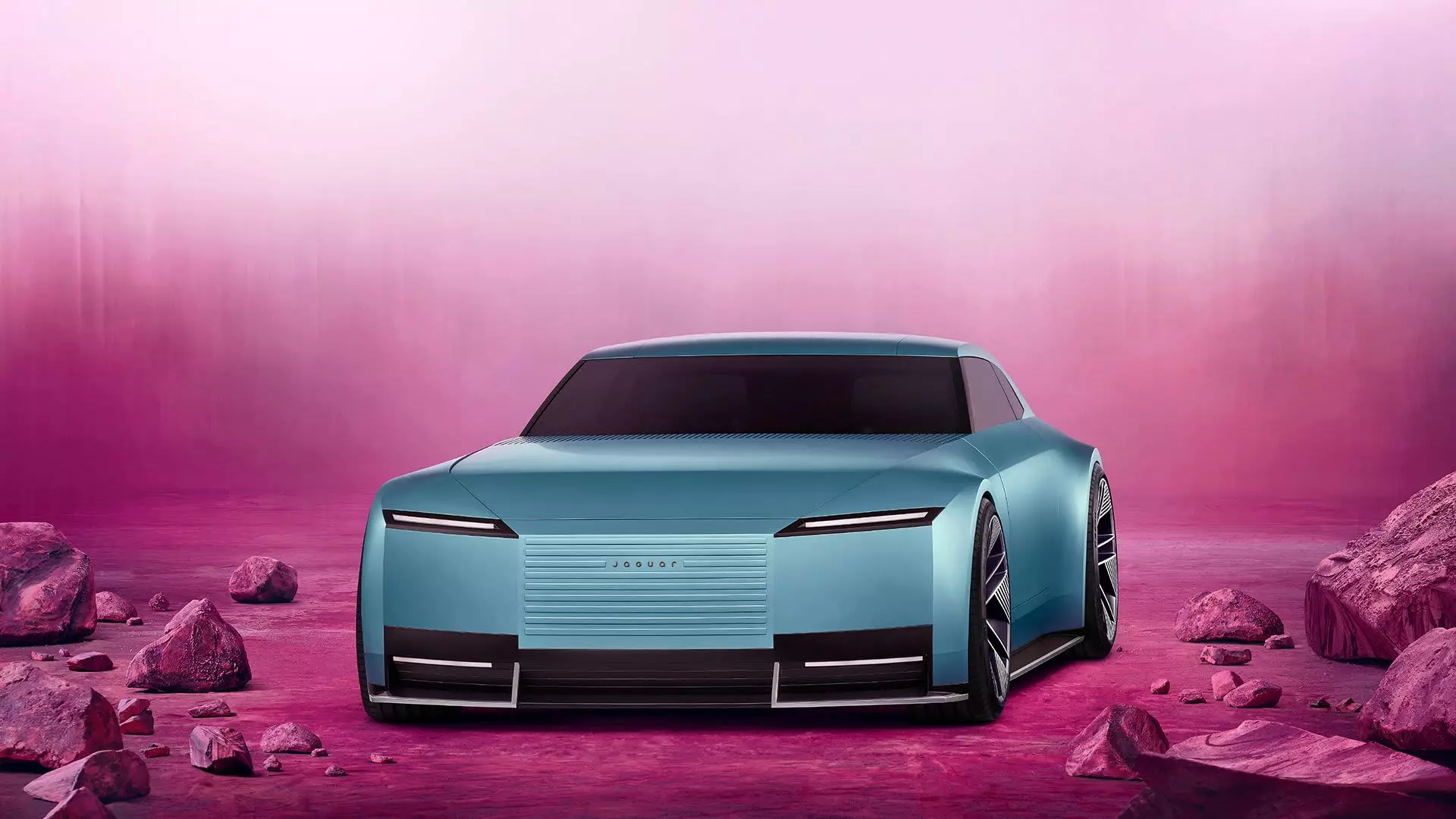In a significant move towards electrification, the British luxury car manufacturer Jaguar has unveiled its latest concept vehicle, the “Type 00,” as its foray into an electric future. This announcement was made to the public with great fanfare, showcasing not just a vehicle, but a holistic shift in Jaguar’s design philosophy and brand identity. While the introduction of the Type 00 could be seen as a bold step, it also invites scrutiny regarding its design, branding strategy, and market positioning in an increasingly competitive landscape.
Design: Minimalism Meets Boldness
The design of the Type 00 stands out for its minimalistic yet audacious aesthetic. Characterized by sharp angles, oversized wheels, and sleek lighting, the vehicle represents a stark departure from Jaguar’s traditional sporty silhouette. This shift raises questions about whether this design effectively encapsulates the luxury image Jaguar has cultivated over decades. While embracing boxy, modern contours aligns with contemporary design trends, one must ponder whether sacrificing the classic blend of elegance and sportiness will alienate their loyal customer base.
Moreover, a concept car is known to serve as a test bed for customer response and innovative design; however, the envelope-pushing nature of the Type 00 may dilute the brand’s heritage. Critics might argue that simply adopting radical minimalism does not inherently mean innovation; rather, it runs the risk of resulting in a faceless design lacking the character that established Jaguar as a titan in automotive aesthetics.
Jaguar’s commitment to transitioning towards an electric-only lineup by 2026 aligns with the broader industry trend. The projected range of 430 miles on a single charge, along with a capacity to achieve 200 miles within 15 minutes of rapid charging, positions the Type 00 in line with the demands of modern consumers. As automakers scramble to adapt to stringent emissions regulations and shifting consumer preferences, Jaguar’s aggressive shift signals an adaptation, but also carries inherent risks.
While many industry leaders have made similar promises, the reality of the electric vehicle market has been characterized by inconsistencies, production challenges, and fluctuating consumer interest. Jaguar’s strategic decision to halt all new car sales while preparing for this transition may reflect either foresight or desperation, effectively placing the brand on an uncertain trajectory. The question remains whether Jaguar can effectively manage this significant transformation without losing touch with its storied legacy.
The “Copy Nothing” Campaign: A Double-Edged Sword
The recent launch of Jaguar’s rebranding campaign titled “Copy Nothing,” which features a striking video showcasing diverse models in a colorful tableau, has sparked as much controversy as acclaim. With a focus on representing modern societal values through inclusive imagery, Jaguar’s marketing team aimed to align the brand with contemporary culture. However, the campaign has also faced backlash for straying too far from traditional automotive cues by omitting any reference to vehicles in the promotional material.
This provocative approach has led to a polarized reception, with critics branding the campaign as “woke” and accusing the brand of discarding its essential identity by eliminating the iconic jaguar logo. The ensuing debate reveals a critical gap in perception between innovative marketing and consumer expectations. As Luxury brands hold an intrinsic charm and heritage, diluting these elements can alienate the very consumers they intend to engage. Jaguar’s marketing strategy thus begs the question: is this bold rebranding a necessary evolution or a misguided attempt at relevance?
With the automotive industry at a crossroads, Jaguar’s ambitious plans to reinvent itself amidst a rapidly evolving market landscape expose both opportunity and risk. As managing director Rawdon Glover articulated, the company aims to redefine its identity at an entirely different price point and moves away from conventional automotive stereotypes. While the future could herald a resplendent renaissance for the brand, achieving this vision requires careful navigation of both design and consumer sentiment to transform aspirations into reality.
Ultimately, Jaguar’s mission to redefine itself through the Type 00 and the overarching rebranding campaign promises an exciting glimpse into its future. However, whether this bold approach will resonate with consumers, uphold the brand’s venerable legacy, and effectively compete against both new and established players remains the crux of the challenge ahead. The journey toward electrification and brand rejuvenation will not be devoid of hurdles, but should Jaguar strike the right balance, it may redefine what it means to be a luxury automotive brand in the electrified age.


Leave a Reply